Threatened Murray cod dying as blackwater spreads
Dead Murray cod have begun floating to the surface of the Murray River and its tributaries as a mass fish kill begins.
Dead Murray cod have started floating to the surface of the Murray River and its tributaries as a large blackwater event spreads.
Swan Hill fisherman Rod Mackenzie said the cod, which were a threatened species, had begun washing up along the Little Murray — a tributary that joins the Loddon and Murray Rivers — this week.
It was “concerning and confronting” to see both large and small fish dying in the blackwater, he said.
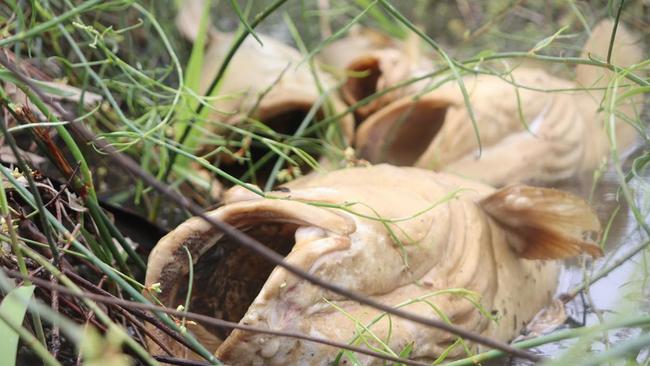
Fish were now also washing up in the main Murray River channel at Swan Hill and upstream at Barham, he said.
“Naturally (blackwater) happens but it is localised.
“This (event) will run for hundreds, if not thousands, of kilometres.”
Blackwater events occur when organic matter like leaf litter is broken down in water by bacteria, causing oxygen to be sucked out of the water and making it difficult for fish and other aquatic animals to breathe.
During blackwater events following the 2011 and 2016 floods, large Murray cod died in the Central Murray. This time, small cod, golden perch and carp were also washing up, Mr Mackenzie said.
“This time it seems to be taking everything. I’ve never seen this (small) size of fish dying.
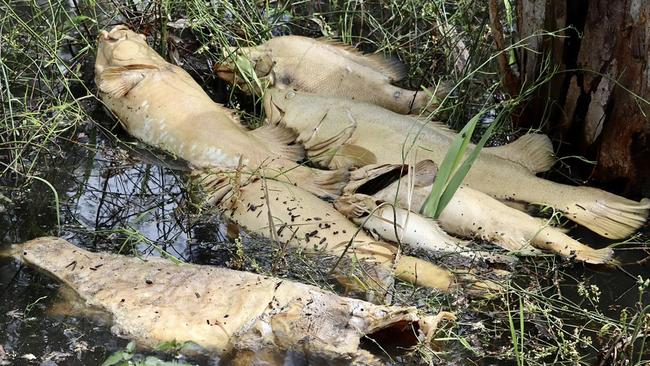
“It takes 10 or more years for these (cod) to grow to one metre long. I have been waiting 10 years to fish again at Robinvale (after the 2011 floods).
“This is a really special fish. It is an icon and it is being wiped out.
“It is a disgrace,” he said.
Mr Mackenzie said he had been fishing on the Murray River for 30 years, and he had not experienced a large blackwater event until the 2011 floods.
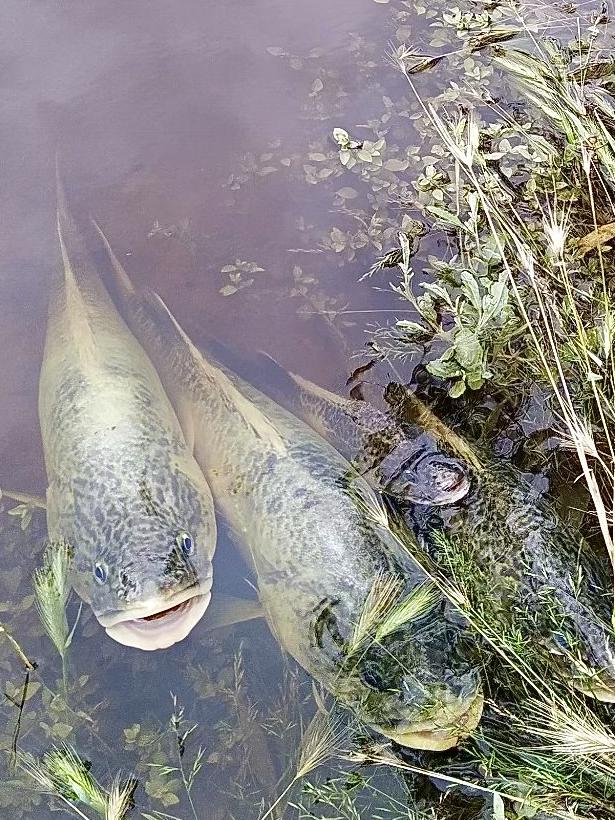
90-100cm Murray cod in distress and a few fatalities.
— Lloyd Polkinghorne (@polky_007) November 2, 2022
Murray River Koondrook Barham, #floodingpic.twitter.com/ugH1e3Mq7x
Friday October 28
Volunteers have begun rescuing aquatic animals from the Murray River as blackwater spreads, starving the animals of oxygen.
Ozfish Unlimited Murray Darling Basin manager Braeden Lampard said a team of staff and volunteers was working along a 2km stretch of river near Swan Hill collecting freshwater Murray crayfish as they emerged from the water for air.
“It is extremely distressing … it is bringing back some bad memories of the Menindee fish kills,” Mr Lampard said.
The volunteers had collected about 50 crayfish so far this week and were relocating them to a location where they would live until the blackwater event passed. They were unable to conduct fish rescues on the water due to a ban on boating in that section of the Murray, he said.
“Murray crayfish and native aquatic species like Murray cod, golden perch silver perch, shrimp and yabbies, are quite vulnerable to black water events,” Mr Lampard said.
“We are seeing native fish showing signs of stress, and the majority of the native fish that are showing stress at the moment, they won’t make it and they will die.”
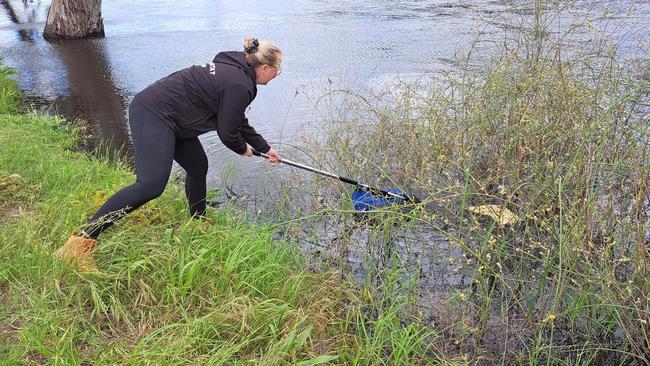
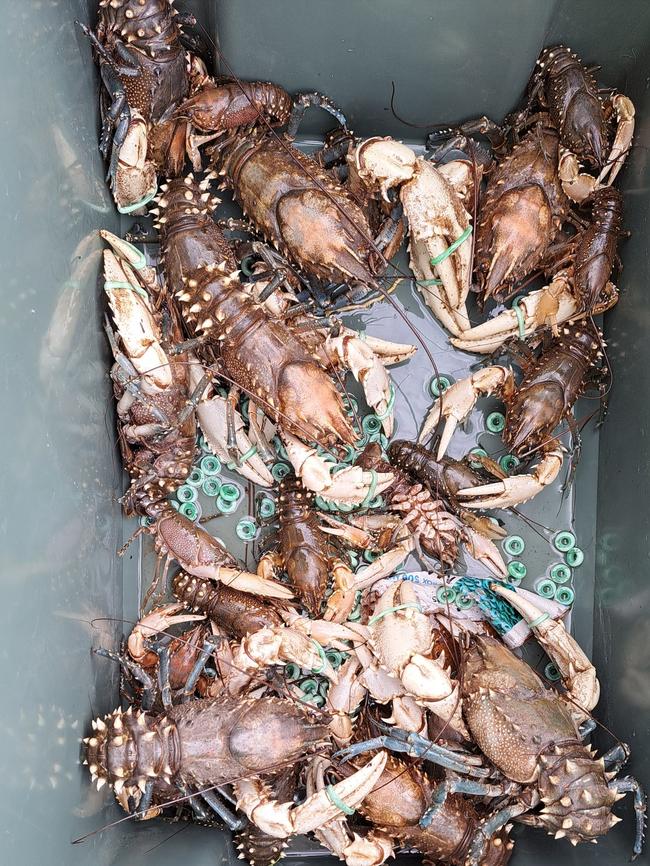
12pm Thursday October 27: Large blackwater event under way
Fish deaths have been reported in Murray Basin tributaries as a large-scale blackwater event triggered by floods starts to spread.
The Arthur Rylah Institute confirmed on Thursday it had received reports of fish deaths in the Lower Broken Creek, Little Murray, Murray River and Lower Loddon River as blackwater spread through the Murray Basin.
Locals have also reported fish deaths on the Wakool River in NSW.
Arthur Rylah Institute principal research scientist Dr Jarod Lyon said the blackwater — which sucks oxygen out of the water and causes aquatic animals to suffocate — was likely to be a “large event”.
“(The blackwater) is already quite widespread. We’re seeing this in large areas of most Victorian rivers that are in flood, and also into other areas of the southern Murray Darling Basin, in New South Wales, and along the Murray main stem.
“Over the last few days, (dissolved oxygen levels have) dropped quite sharply in patches further up in the flood plain, but even along the main (Murray) channel.”
Major blackwater events that occurred after floods in 2011 and 2016 came later in the season and were further down the Murray River than this year.
“This one is starting a bit further up in the system, which is why there are quite a few people concerned about it,” Dr Lyon said.
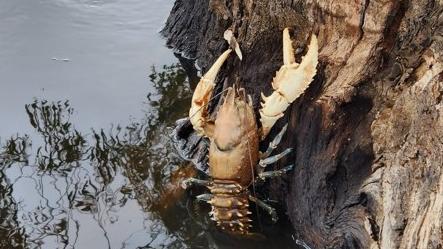
Blackwater events occur when organic matter like leaf litter is broken down in water by bacteria, causing oxygen to be sucked out of the water and making it difficult for fish and other aquatic animals to breathe.
“Anything with gills” was at risk of dying as blackwater spread through the river system, Dr Lyon said.
Threatened species like Murray cod would be at risk, but may be able to seek refuge in areas with higher oxygen levels, Dr Lyon said.
In an Arthur Rylah Institute study conducted in 2011, 40 per cent of tagged Murray cod affected by a blackwater event near Mildura died. The remainder were able to travel downstream and seek refuge in small channels.
Threatened trout and silver perch species would also be affected, Dr Lyon said.
Locals have reported dozens of crayfish crawling out of the Murray River at Swan Hill this week, seeking refuge out of the water on river banks and trees.
Dr Lyon said crayfish out of water was often an early indication that a blackwater event was under way.
“That is often the first thing people see,” he said. “Then they will see shrimp in the shallows struggling for oxygen.”
Yabbies are crawling out of the contaminated black water and walking around our farm. We’re relocating them to a “clean†dam that would have plenty of oxygen. #flood#moama#floodnsw#bunnaloo#wildlifepic.twitter.com/JHAPcSbNQ5
— Fleur Ferris (@FleurFerris) October 27, 2022
Swan Hill resident and Friends of Nyah Vinifera Park chair Jacquie Kelly said the blackwater event was made worse by the infrequency of flood events.
“Blackwater happens when the flood plain isn’t refreshed enough, when you’re not getting the overbank events regularly to flush out the leaf litter and tannins in the flood plain,” she said.
“It is one of the many impacts of the way we are controlling the river right now.”
Dr Lyon said it was still unclear where exactly the blackwater was coming from.
“Whether it’s coming off areas that are higher in the flood plain that are being flooded for the first time in a long time, remains to be seen.
“We know that the less organic material there is on a flood plain, the lower the risk of a blackwater event.”
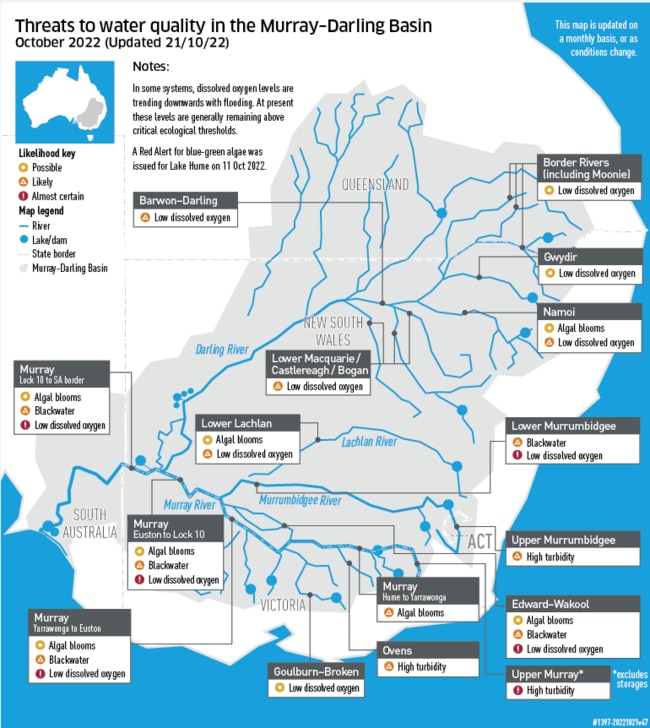
In a statement, the Murray Darling Basin Authority said it was “not possible” to prevent the blackwater event.
NSW Department of Planning and Environment director of water planning implementation Allan Raine said methods used to control blackwater in drought situations would not work because of the scale of the flooding in the river system.
“Artificial aerators in specific river sections won’t be viable for combating large volume and widespread blackwater events,” Mr Raine said.
Authorities have urged people to alert NSW Fisheries or the Victorian Environment Protection Authority if they see fish struggling.
To report areas in NSW where fish may be struggling or a fish death event has occurred, call the NSW Fisheries Hotline on 1800 043 536.
Community members in Victoria can report fish deaths to the EPA’s Pollution Hotline on 1300 372 842 (1300 EPA VIC).





